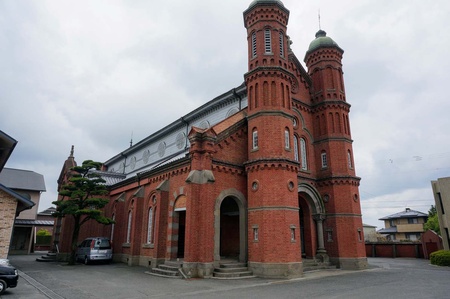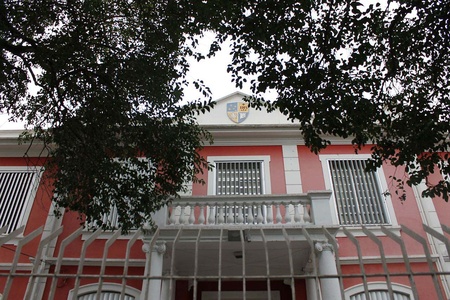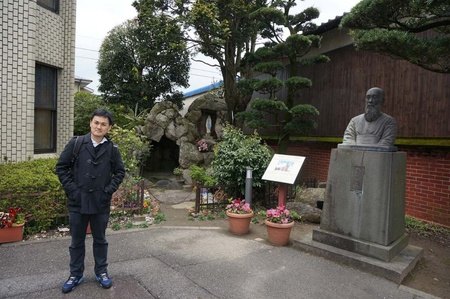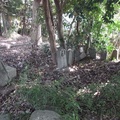A new beginning in Brazil
Rural poverty plagued Japan during the early 20th century, where cities rapidly grew and modernized, but the countryside continued the feudal system of centuries ago. Imamura was naturally no exception. For many people living off the land, Brazil was a land of opportunity to improve their lives and make a fortune, but for Japanese Catholics, it was also a country where their faith could be seen and celebrated everywhere.
Without a doubt, Brazil was attractive to Imamura's Catholics, but they found themselves in a dilemma, as they also wanted to help build a new church under the leadership of Father Tamotsu Honda. Noticing such hesitation, Father Honda encouraged the faithful to leave and experience immigrant life in Brazil, promising to welcome them with a “magnificent church” when they returned to Japan. 2
Thus, in 1912, the ship Kanagawa-maru left Japan for Brazil, bringing the first wave of immigrants from Imamura and the region. The current Catholic Church of Imamura, designed by renowned architect Yosuke Tetsukawa, built with the work of the faithful and with resources from Germany, was inaugurated in 1913. As we know, making a fortune in Brazil was much more difficult than the first Japanese immigrants thought. , and few would be able to return to Japan to see the church that many dreamed of and helped build. two
Life on coffee farms in Brazil was arduous, with many immigrants ending up in debt, or falling ill and suffering from tropical diseases that did not exist in Japan. But for Imamura's Catholics, faith and community ties were a powerful ally. to face the difficulties, even though we are spread across the state of São Paulo. two
Even though they had little savings at the time, they financed, without thinking twice, the founding of a Catholic school for Japanese immigrants in the city of São Paulo – the Colégio São Francisco Xavier, founded in 1928 by Father Guido del Toro, and which had as first director Shinto Aoki, himself an immigrant from Imamura. 2 In the same year, the Church of Saint Francis Xavier was inaugurated in the city of Registro, designed by two Catholics from Imamura, Shinjiro Aoki and Heiichi Kurita, and financed by the Japanese government through Kaigai Kogyo Kabushiki Kaisha (KKKK). Ironically, Japan, which for centuries persecuted Christians in Japan, now helped them convert to Christianity as a way of improving their image in Brazil. 6
Arrival in the “Promised Land”
In the late 1920s, one of the largest Japanese coffee growing communities in Brazil was the Colônia de Itacolomí in the municipality of Promissão, founded by the pioneer Shuhei Uetsuka in 1918. The name “Promissão” refers to the “Promised Land” of the Bible, where the Hebrews They migrated fleeing persecution in Egypt and seeking a better life in their own lands. For Catholic Japanese, whose ancestors suffered persecution in their home country, and who could not own land due to the feudal system, the name made more than sense.
It was at this time that 78 Japanese Catholic families from the Imamura region, as well as dozens of other Catholic families from different parts of Nagasaki (especially the Hirado, Ikitsuki and Goto islands), settled in the Gonzaga neighborhood of the Itacolomí Colony. 7
The Gonzaga community has become similar to Imamura Village in many ways. In addition to the Catholic faith, they maintained extremely strong community ties and marriages generally took place within it; as a consequence, the surnames Hirata and Aoki remained common generation after generation. 7 Like their ancestors, they initially built a simple wooden church, and later built and inaugurated a large red brick church – the Cristo-Rei dos 26 Mártires Church, inaugurated in 1938 and whose name pays homage to the 26 missionaries executed by Hideyoshi Toyotomi more than 300 years earlier. 7, 8

However, unlike Imamura which existed for centuries, the colony founded by Shuhei Uetsuka was destined to disappear the moment it began. Unlike rice plantations in the Chikugo plain, coffee monoculture in the state of São Paulo, carried out using unsophisticated techniques, resulted in gradual erosion and loss of soil fertility. Over time, especially after World War II, the inhabitants of Gonzaga left the region. Many moved to Arapongas, in Paraná, where they established Colônia Esperança, or to cities and other places. 7
The current
Despite being close to the Tachiarai Air Base, which was heavily bombed during World War II, Imamura itself was not targeted for destruction. Despite this, the war brought great deprivation and suffering to the inhabitants, relieved through donations from Brazil 3 and new waves of emigration to Brazil and other Latin American countries, especially Mexico and Peru. 9
In 1953, Nisei João Sussumu Hirata founded the Howa-kai Charitable Association of Fukuoka, as a way of maintaining ties between the descendants of the Catholic community of Imamura. 10 In 1967, Sussumu became Brazil's second Nikkei deputy, striving to modernize the country's agricultural sector. In 1977, Joaquim Matsuo Hirata, a resident of Imamura born in Brazil, published “Jashumon Iken Kutigakicho”, a document from the years 1867-1868 produced by the Takahashi district authorities that describes the arrests and interrogations in Imamura at the time, and the most valuable source of information about the lives of the “Kakure Kirishitans” of the Chikugo Plain. 2, 3
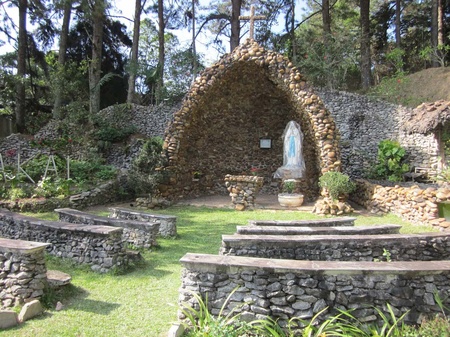
Imamura remains a quiet, predominantly Catholic village, and the region also has a second church in the village of Hongo. The Imamura Catholic Church was declared a Heritage Site of Great National Importance in Japan in 2015. 11
In Brazil, the tradition of marriages within the community lost strength, and today, the descendants of Catholics from Imamura and the Gonzaga neighborhood are completely integrated into Brazilian society. Unfortunately, few people know the history of their ancestors. Due to the small number of remaining inhabitants in the Gonzaga neighborhood, the Cristo-Rei dos 26 Mártires em Promissão Church suffers from difficulties in having adequate maintenance. 8, 12
Learning about my ancestors, both from Japan and Brazil, taught me valuable lessons, given that I myself became an immigrant and a minority in a third country. I discovered Imamura, the village where my great-grandparents lived, in 2013, about 100 years after they moved to Brazil. As he promised, Father Honda was waiting for me in a magnificent church.
References
1. 伊藤慎二, 考古学からみた筑後今村キリシタン, 西南学院大学国際文化論集 29(2), 71-97, ISSN 0913 -0756, March 2015.
1.第2号, March 2014, ISSN 2187-6266.
3. 佐藤早苗, 奇跡の村 : 隠れキリシタンの里, 河出書房新社, 2002.
4.カトリック久留米教会, visited on 22 Jul 2021.
5. 中川憲次, カトリック愛苦会修道会の歴史的研究(1)草創期, Fukuoka Jogakuin University bulletin Human relations (9), 47-53, ISSN 13473743, March 2008 .
72. 最古の日系カトリック教会=不思議な政治的設立経緯」、 Nikkey Shimbun , 13 Nov 2013, visited on 19 Jul 2021.
7. Shigueyuki Yoshikuni, Church of Christ the King of the 26 Martyrs, reopening publication on 25 Nov 2011.
8. Aldo Shiguti, “Mass at the Church of Christ the King of the 26 Martyrs should attract 2 thousand pilgrims”, Jornal Nippak, Year 11 – N° 2191, São Paulo, 22 to 28 Nov 2008.
9. 林雅孝, 社会体制と家族の変化, 日本社会分析学会、機関誌No.10-11.
10. 元隠れキリシタンが作った保和会の役割, https://www.nikkeyshimbun.jp/2019/190226-column.html , Nikkey Shimbun, 26 Feb 2019, visited on 22 Jul 2021.
11 .
12. Textもが夢の跡…, https://www.nikkeyshimbun.jp/2008/080620- iminnohi-zenhan6.html , Nikkey Shimbun, 20 Jul 2008, visited on 22 Jul 2021.
Acknowledgments: I thank Prof. Shinji Ito, Roberto Shiguer Aoki, Bernardo Watanabe, and Joe Hirata for contributing stories and materials to this article.
© 2021 Edson Aoki


